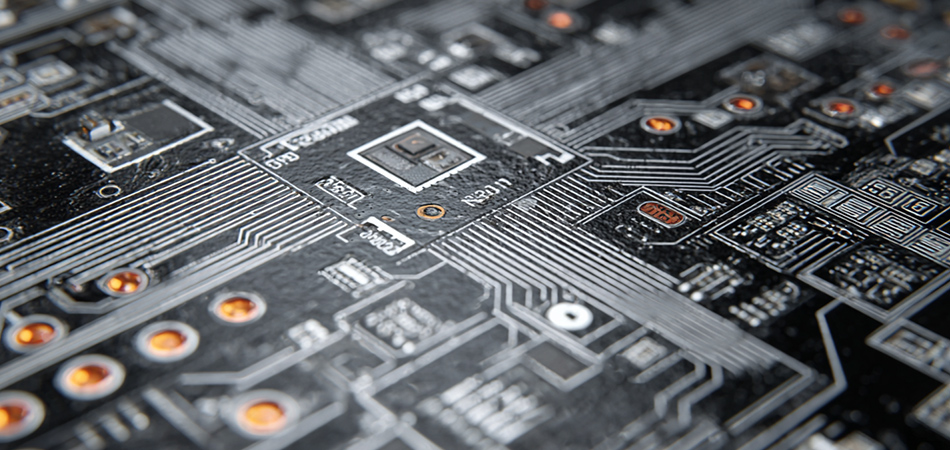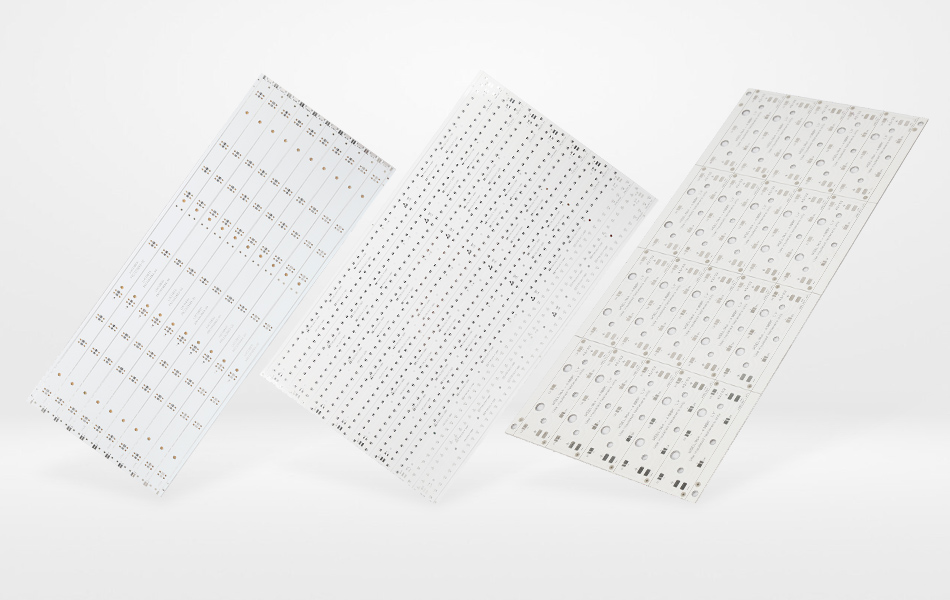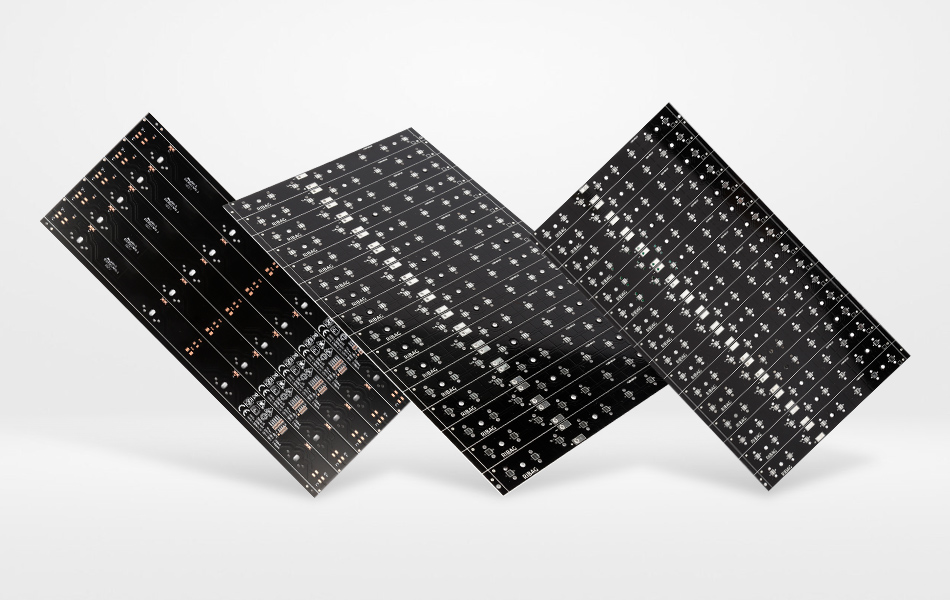-
- PCB TYPE
- PRINTED CIRCUIT BOARD PROTOTYPE ALUMINUM PRINTED CIRCUIT BOARD R&F PCB FPC HIGH FREQUENCY PCB HIGH-TG PCB HEAVY COPPER PCB HDI PCB PCB FOR LIGHTING METAL CORE PCB
time:Jul 18. 2025, 09:21:58
High reflective soldermask has emerged as a critical component in modern electronics, where light efficiency and thermal management are paramount. Unlike standard soldermasks, which prioritize electrical insulation and corrosion resistance, high reflective variants are engineered to maximize light reflection, minimizing energy loss in light-emitting applications while maintaining robust protective properties. This article explores the material science behind high reflective soldermasks, their performance characteristics, key applications across industries, and advancements driving their evolution in high-efficiency electronics.
Material Science of High Reflective Soldermask
Core Composition and Reflective Mechanisms
High reflective soldermasks are formulated using a precise blend of polymers, reflective fillers, and functional additives:
Polymer Matrix: Epoxy and polyester resins form the base, providing adhesion to PCB substrates (FR-4, aluminum, ceramic) and mechanical durability. These resins are selected for their low light absorption, ensuring minimal energy loss before reflection.
Reflective Fillers: Micron-sized particles—primarily titanium dioxide (TiO₂), zinc oxide (ZnO), and barium sulfate (BaSO₄)—scatter and reflect light. TiO₂ is favored for its high refractive index (≈2.7), which enhances light bouncing at the material-air interface, while ZnO offers superior UV reflection, critical for outdoor applications.
Functional Additives: Anti-yellowing agents (e.g., hindered amine light stabilizers) prevent degradation under prolonged UV exposure, maintaining reflectivity over time. Flow modifiers ensure uniform coating thickness, avoiding uneven light absorption in thin or thick spots.
The synergy of these components creates a soldermask that reflects a significant portion of incident light across visible and near-UV spectra, a stark contrast to standard green or black soldermasks, which absorb 30–50% more light.
Balancing Reflectivity with Protective Properties
High reflective soldermasks must excel beyond light performance, meeting stringent PCB requirements:
Electrical Insulation: The polymer matrix and fillers maintain high dielectric strength, preventing current leakage between copper traces—essential for high-voltage applications like LED drivers.
Chemical Resistance: Resistance to flux residues, cleaning solvents, and solder pastes ensures the soldermask remains intact during assembly, preserving both reflection and protection.
Thermal Stability: Formulations withstand reflow temperatures (up to 260°C) without yellowing or cracking, critical for surface-mount technology (SMT) processes in LED and display manufacturing.

Key Applications of High Reflective Soldermask
LED Lighting Systems
High reflective soldermask is indispensable in LED technology:
General Illumination: In LED bulbs, panels, and streetlights, the soldermask reflects light emitted sideways or downward from LEDs back toward the primary illumination direction, increasing system efficacy by reducing light trapped within the PCB. This reduces the number of LEDs needed for a given brightness, lowering costs and energy consumption.
Automotive Lighting: Headlights, taillights, and interior LEDs rely on high reflectivity to ensure uniform light distribution and compliance with safety standards. The soldermask resists yellowing from engine heat and UV exposure, maintaining visibility over vehicle lifespans.
Display Technologies
In advanced displays, high reflective soldermask enhances visual performance:
Mini LED and Micro LED Displays: These high-density displays use soldermask to reflect light from tiny LEDs, improving contrast ratios by minimizing light bleed between pixels. The uniform reflection ensures consistent brightness across the screen, critical for high-end TVs and monitors.
Backlit Panels: In LCD backlights, the soldermask reflects light from edge-lit LEDs across the panel, reducing hotspots and ensuring even illumination—key for readable signage and digital displays.
Specialized Lighting Applications
Beyond general use, high reflective soldermask supports niche industries:
UV Curing Systems: In industrial UV curing (e.g., printing, coating), soldermask reflects UV light onto substrates, enhancing curing efficiency and reducing energy waste. UV-stable formulations prevent degradation from intense UV exposure.
Medical Lighting: Surgical lamps and diagnostic equipment use high reflective soldermask to maximize light output while minimizing heat generation, ensuring precise illumination without damaging sensitive tissues.

Performance Optimization and Testing
Factors Influencing Reflectivity
Several design and manufacturing variables impact performance:
Surface Finish: A smooth, matte surface scatters light more uniformly than a glossy finish, which may create glare or hotspots. Micro-textured soldermask designs enhance diffuse reflection, improving light distribution.
Coating Thickness: Optimal thickness (typically 25–50μm) balances reflection and durability. Too thin, and the soldermask may not fully cover copper traces, reducing reflection; too thick, and light absorption increases.
Substrate Compatibility: High reflective soldermask performs best on aluminum PCBs, where the metal substrate further aids heat dissipation, preventing thermal-induced yellowing in high-power applications.
Testing and Quality Assurance
Rigorous testing ensures soldermask performance:
Reflectivity Measurement: Spectrophotometers quantify reflection across wavelengths (400–700nm for visible light, 365nm for UV), verifying consistency across production batches.
Aging Tests: Accelerated UV exposure and thermal cycling simulate years of use, checking for yellowing, cracking, or reduced reflectivity.
Adhesion and Flexibility: Tape tests and bend tests confirm the soldermask adheres to PCBs under mechanical stress, preventing delamination that would compromise both reflection and protection.

Manufacturing and Processing Considerations
Application Techniques
High reflective soldermask requires precise application:
Screen Printing: The most common method, using mesh screens to deposit uniform layers. Stencil design ensures coverage of critical areas (around LEDs, display pixels) while avoiding solder pads.
Spray Coating: Ideal for complex PCB geometries (e.g., curved automotive lighting PCBs), ensuring even coverage on non-flat surfaces.
Photolithography: For high-precision applications (e.g., Micro LED displays), photoresist-based soldermasks are patterned using UV light, creating sharp edges around tiny components to maximize reflection in pixel-level details.
Curing Processes
Curing impacts both reflectivity and durability:
UV Curing: Fast, energy-efficient curing using UV light, suitable for most LED and display PCBs. Formulations include photoinitiators that trigger polymerization, ensuring rapid hardening without heat-induced yellowing.
Thermal Curing: Used for high-temperature applications, where heat (120–180°C) cures the soldermask for enhanced chemical and thermal resistance. This is common in automotive and industrial PCBs exposed to harsh environments.

Industry Standards and Compliance
High reflective soldermask must meet global standards to ensure reliability:
IPC Standards: IPC-4552 (Specification for Solder Mask for Printed Boards) defines requirements for reflectivity, adhesion, and thermal stability, with specific guidelines for high reflective variants.
Automotive Standards: IATF 16949 compliance ensures soldermasks meet automotive-grade durability, including resistance to vibration, temperature cycling, and chemical exposure.
Environmental Regulations: RoHS and REACH compliance restricts hazardous substances (e.g., lead, cadmium) in soldermask formulations, aligning with global sustainability goals.

Future Trends in High Reflective Soldermask Technology
Advanced Material Innovations
Research focuses on next-generation improvements:
Nano-Enhanced Fillers: Nanoparticles (e.g., TiO₂ nanocrystals) with controlled size and shape scatter light more efficiently, potentially increasing reflectivity while reducing filler loading—lowering material costs and improving flexibility.
Self-Cleaning Coatings: Photocatalytic additives (e.g., zinc oxide nanoparticles) break down dust and organic residues under UV light, maintaining high reflectivity in outdoor applications (e.g., streetlights, solar panels) with minimal maintenance.
Integration with Multifunctional PCBs
Emerging trends combine reflectivity with other properties:
Thermally Conductive High Reflective Soldermask: Adding ceramic fillers (e.g., alumina, boron nitride) enhances both light reflection and heat dissipation, ideal for high-power LEDs and automotive lighting where thermal management is critical.
Antimicrobial Formulations: Silver ion additives in soldermask prevent bacterial growth on medical lighting PCBs, combining high reflectivity with hygiene benefits.
Conclusion
High reflective soldermask has evolved from a niche component to a foundational technology in efficient lighting and display systems. By balancing material science innovation with practical performance requirements—reflectivity, durability, and process compatibility—it enables brighter, more energy-efficient, and cost-effective electronics across industries. As LED, display, and automotive technologies advance, high reflective soldermask will continue to play a pivotal role in pushing the boundaries of light efficiency and visual performance, proving that even subtle material improvements can drive significant technological progress.

Got project ready to assembly? Contact us: info@apollopcb.com



We're not around but we still want to hear from you! Leave us a note:

Leave Message to APOLLOPCB
